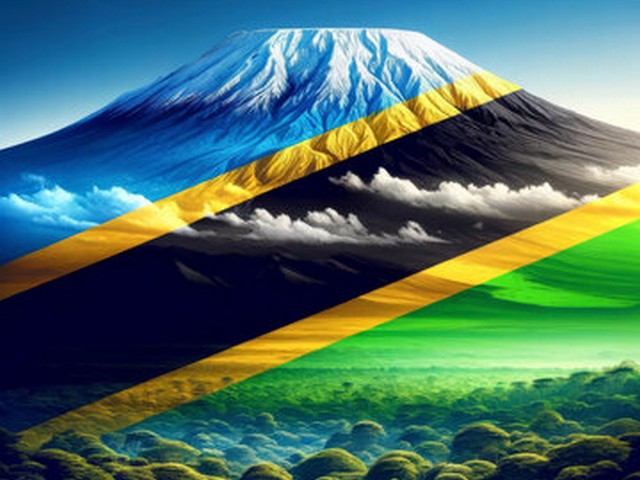How To Organise A Kilimanjaro Photography Trek
Introduction: Capturing the Majestic Beauty of Kilimanjaro
Mount Kilimanjaro, Africa’s highest peak, is not just a mountain; it’s a canvas where nature paints its masterpieces daily. For photography enthusiasts and professionals alike, Kilimanjaro offers a unique blend of breathtaking landscapes, diverse wildlife, and vibrant cultural scenes. If you’ve ever dreamed of capturing the perfect sunrise over the Mawenzi peak or the majestic stance of elephants against a backdrop of the Shira Plateau, then a Kilimanjaro photography trek is your gateway to a portfolio of unforgettable images. The question, however, remains: how do you organise such a trek to ensure you capture these wonders in the best possible way? The Kilimanjaro Centre for Trekking and Ecotourism (KCTE) is here to guide you through this exciting journey.
Planning Your Photography Trek: A Step by Step Guide
H2: Understanding the Best Times to Visit
Timing is everything in photography. To capture Kilimanjaro in its full glory, knowing the best times to visit is crucial. The dry seasons, from June to October and from December to March, offer clear skies and minimal precipitation, making them ideal for photography. These periods also provide the best chance for wildlife viewing, adding more depth to your photos.
H2: Selecting the Right Route
Each of Kilimanjaro’s routes offers distinct photographic opportunities:
- Marangu Route: Often called the "Coca-Cola" route, it is the only route with hut accommodations and is great for capturing village life and lush landscapes.
- Machame Route: This is perfect for adventurers who want dramatic scenery and diverse climatic zones.
- Lemosho Route: Ideal for photographers eager to capture untouched wilderness and panoramic views.
Our experts at KCTE can help you choose the route that best matches your photographic ambitions.
H2: Essential Photography Gear and Preparation
A successful photography trek requires the right gear. Here’s what you should consider packing:
- Camera Equipment: A durable camera, multiple lenses (wide-angle for landscapes and a telephoto lens for wildlife), and plenty of memory cards.
- Protection for Your Gear: Waterproof bags and silica gel packs to protect from moisture.
- Tripod: For those perfect sunrise and sunset shots.
- Extra Batteries and Portable Chargers: Cold weather can drain batteries quickly.
Preparation also includes familiarizing yourself with your equipment so you can operate it comfortably under different weather conditions.
H2: Physical and Mental Preparation
Trekking Kilimanjaro is physically demanding. Prioritize physical fitness with cardiovascular and strength training several months before your trek. Mental preparation is equally important; be ready for challenging days, and keep a positive mindset.
Maximizing Your Photography Opportunities on Kilimanjaro
H2: Understanding Light and Weather Patterns
The golden hours, early morning and late afternoon, are prime times for capturing the soft, magical light on Kilimanjaro. Familiarize yourself with the weather patterns to anticipate lighting conditions and ensure you’re in the best spots at the right time.
H2: Engaging with the Environment
Be patient and respect the natural surroundings. Sometimes the best photographs come from unexpected moments. Engage with local guides and fellow trekkers who might provide insights into unexplored spots or unique perspectives.
H2: Capturing the Summit Experience
Reaching the summit, Uhuru Peak, is the highlight for many. Plan to reach the summit for sunrise; the early morning light provides a breathtaking backdrop for the highest point in Africa.
Why Book Your Trek with Kilimanjaro Centre for Trekking and Ecotourism (KCTE)?
H2: Expertise and Experience
At KCTE, we pride ourselves on our deep understanding of Kilimanjaro’s diverse ecosystems and photographic hotspots. Our guides are trained to assist photographers in capturing the best shots while ensuring a safe and enjoyable trek.
H2: Tailored Photographic Itineraries
We offer customized itineraries that focus on maximizing photographic opportunities. Whether you’re interested in wildlife, landscapes, or cultural elements, KCTE designs the trek around your specific interests.
H2: Commitment to Ecotourism
KCTE is dedicated to sustainable tourism practices. By booking with us, you contribute to the preservation of Kilimanjaro’s natural beauty and support local communities.
Conclusion: Your Next Steps to an Unforgettable Photographic Journey
Organising a Kilimanjaro photography trek can seem daunting, but with the right preparation, it becomes an exhilarating adventure. By understanding the best times to visit, selecting the appropriate route, preparing your gear and yourself, and choosing a knowledgeable tour operator like KCTE, you’re well on your way to capturing the breathtaking beauty of Kilimanjaro.
Ready to start planning your Kilimanjaro photography trek? Contact Kilimanjaro Centre for Trekking and Ecotourism (KCTE) today, and let us help you create a journey filled with spectacular photos and memories to last a lifetime.
FAQ
What is the best month for photography on Kilimanjaro?
The best months for photography on Kilimanjaro are during the dry seasons, typically from June to October and from December to March.
How difficult is the trek?
The difficulty depends on the route and your physical condition. However, with proper preparation, people of reasonable fitness can successfully summit.
Can KCTE accommodate special dietary needs?
Yes, KCTE can accommodate most dietary needs. Please inform us in advance so we can make the necessary arrangements.
How many days does a typical photography trek take?
A typical photography trek can take between 6 to 8 days, depending on the route and pace of the trek.
Capture not just images, but also the spirit of Africa’s mightiest peak. Join us at KCTE for a journey that goes beyond ordinary.




